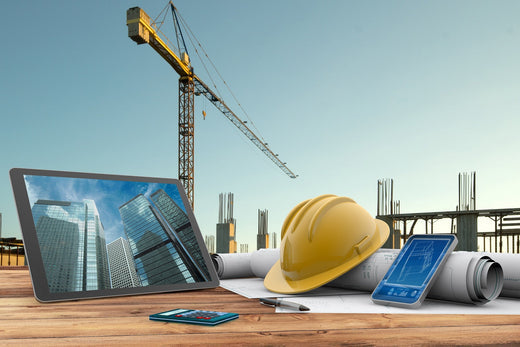
Emerging Technologies in the Construction Industry: Transforming the Future
Share

Introduction
The construction industry stands on the brink of a technological revolution, driven by cutting-edge innovations and sustainable practices. From digital transformation to eco-friendly solutions, these advancements are redefining how buildings and infrastructure are designed, built, and maintained. According to a report by Next Move Strategy Consulting, the global construction market is projected to reach $16.10 trillion, with a CAGR of 5.9% by 2030. This blog explores the transformative technologies revolutionizing the construction sector and their potential to unlock unprecedented growth and efficiency.
Building Information Modeling (BIM): The Digital Backbone
Building Information Modeling (BIM) has emerged as a cornerstone of the construction industry’s digital transformation. By creating comprehensive digital representations of construction projects, BIM enhances collaboration, visualization, and analysis throughout the project lifecycle. Key benefits include:
- Improved Decision-Making: Centralized data sharing fosters better collaboration among stakeholders.
- Error Reduction: BIM identifies potential issues early, minimizing costly mistakes.
- Enhanced Project Outcomes: Streamlined processes lead to improved quality and efficiency.
Investing in BIM-driven projects can reduce risks and elevate construction standards, positioning companies for long-term success.
Prefabrication and Modular Construction: Speed Meets Quality
Prefabrication and modular construction techniques are transforming traditional methods by assembling building components off-site in controlled environments. These approaches offer:
- Accelerated Timelines: Modular construction can reduce project timelines by 30–50%, according to the Center for American Progress.
- Cost Efficiency: Factory-controlled settings minimize material waste and labor costs.
- Scalability: Modular construction adapts easily to diverse project demands.
For investors, these methods promise rapid returns and scalable growth opportunities.
Robotics and Automation: Enhancing Productivity and Safety
Robotics and automation are redefining operations on construction sites. From autonomous vehicles to robotic bricklayers, these technologies:
- Boost Productivity: Repetitive tasks are performed with precision and consistency.
- Enhance Safety: Automation minimizes human exposure to hazardous environments.
- Optimize Resource Allocation: Human workers focus on complex, value-added activities.
Robotics investments yield efficiency gains and safer work environments, reducing project costs and risks.
Augmented Reality (AR) and Virtual Reality (VR): Immersive Planning
AR and VR technologies are revolutionizing project planning and stakeholder engagement. Their applications include:
- 3D Visualization: Stakeholders can explore projects virtually, enhancing understanding and communication.
- Error Prevention: Virtual simulations identify potential issues before construction begins.
- Improved Decision-Making: Immersive experiences enable better project planning.
These technologies foster stronger stakeholder collaboration and reduce costly revisions, offering significant ROI.
Internet of Things (IoT): Data-Driven Construction
IoT devices, such as sensors and drones, are transforming site management by providing real-time data on:
- Equipment Utilization: Ensuring optimal use of resources.
- Safety Monitoring: Identifying and addressing hazards promptly.
- Proactive Maintenance: Reducing downtime and increasing efficiency.
IoT integration drives smarter construction practices, enhancing both performance and profitability.
3D Printing: Redefining Possibilities
3D printing is unlocking new possibilities in design and sustainability. Its benefits include:
- Design Freedom: Complex structures can be fabricated with ease.
- Material Efficiency: Reducing waste while maintaining strength and durability.
- Faster Construction: On-site production accelerates project timelines.
This technology opens doors to innovative and cost-effective construction solutions, making it a compelling investment opportunity.
Sustainable Construction Practices: Building for the Future
Sustainability is no longer optional—it’s a necessity. Key practices include:
- Green Materials: Eco-friendly alternatives reduce environmental impact.
- Energy-Efficient Designs: Lower operating costs and carbon footprints.
- Renewable Integration: Promoting long-term sustainability.
Investing in sustainable projects aligns with global trends and ensures compliance with evolving regulations, making it a win-win for companies and the planet.
Conclusion
The construction industry is undergoing a profound transformation, fueled by advanced technologies and sustainable practices. Innovations like BIM, prefabrication, robotics, AR/VR, IoT, 3D printing, and green construction methods are reshaping the sector, driving efficiency, and fostering growth. For investors, this evolution presents a golden opportunity to capitalize on a market poised for exponential expansion.
By embracing these technologies, construction firms can enhance collaboration, optimize resources, and deliver sustainable solutions that meet the demands of a rapidly changing world. The future of construction is here, and it’s time to build smarter, faster, and greener.